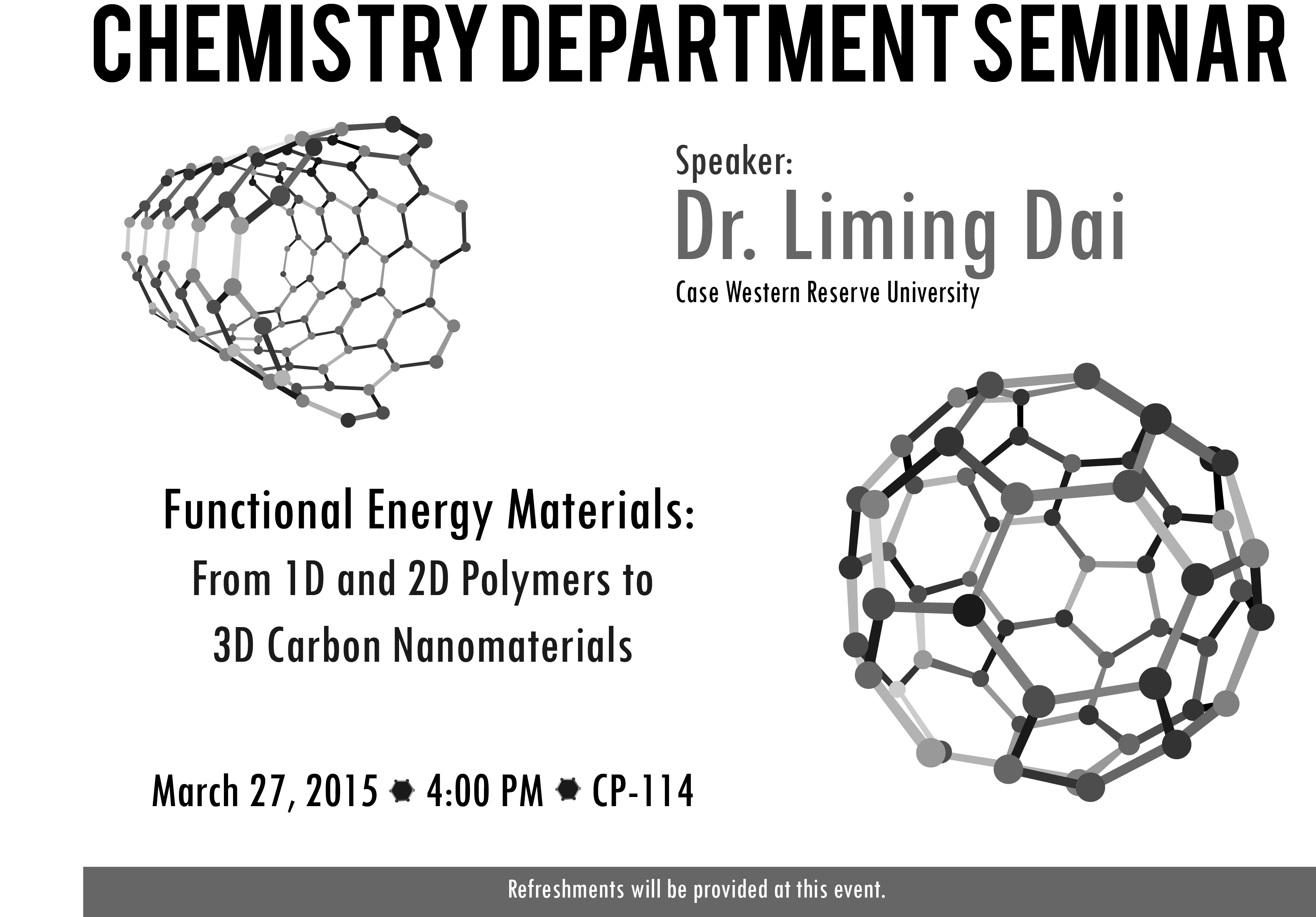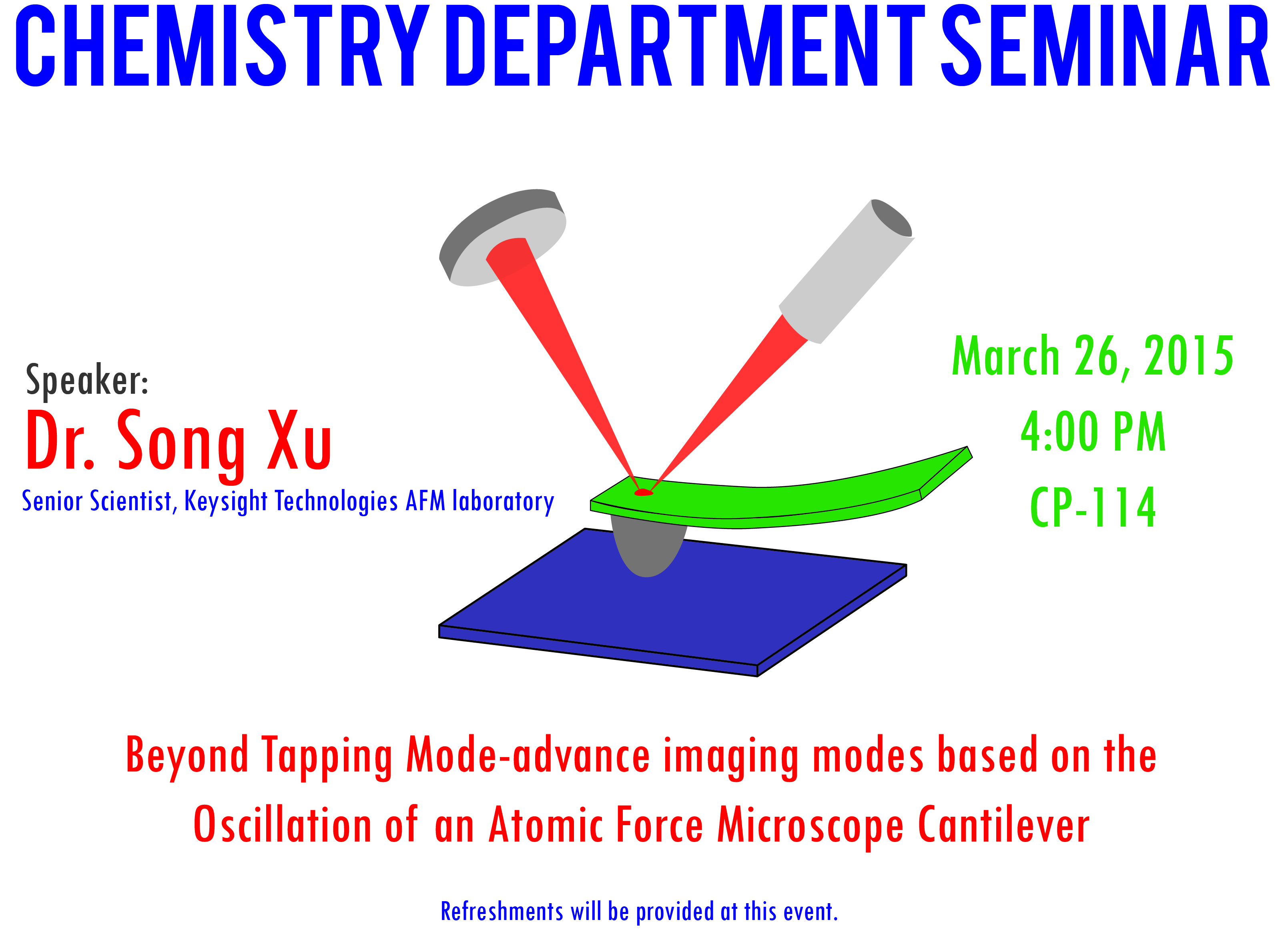----------
Dr. Liming Dai of Case Western Reserve University will be presenting a seminar titled Functional Energy Materials: From 1D and 2D Polymers to 3D Carbon Nanomaterials.
Abstract: With the rapid increase in the global energy consumption, there is a pressing need for clean and renewable energy alternatives. Polymers have been traditionally used as electrically insulating materials: after all, metal wires are coated in plastics to insulate them. Various conjugated macromolecules with alternating single and double bonds can now be synthesized with the processing advantages of plastics and the optoelectronic properties of inorganic semiconductors for optoelectronic device applications, including polymer photovoltaic cells [1].
Having conjugated all-carbon structures, carbon nanomaterials, including 1D carbon nanotubes (CNTs) and 2D graphene sheets, also possess certain similar optoelectronic characteristics as conjugated macromolecules, apart from their unique surface/size effects. With the rapid development in nanoscience and nanotechnology, graphitic carbon nanomaterials have been playing a more and more important role in the development of efficient energy conversion and storage devices, including solar cells, fuel cells, supercapacitors, and batteries [2-4]. Recently, considerable efforts have been made to utilize graphitic carbon nanomaterials, along with conjugated polymers, as energy materials and tremendous progress has been achieved. More recently, certain 2D conjugated polymers and 3D graphitic carbon architectures (e.g., CNT-graphene pillared networks, graphene foams) have been demonstrated to show additional advantages for efficient energy conversion and storage [5,6].
In this talk, I will summarize our work on the rational design and development of multi-dimensional conjugated polymers and graphitic carbon nanomaterials for efficient energy conversion and storage, including polymer solar cells containing graphitic carbon nanomaterials for improved charge transport, fuel cells and metal-air batteries with carbon nanomaterials/polymers as metal-free catalysts for oxygen reduction and evolution, and flexible supercapacitors based on CNT-/graphene-based electrodes for energy storage. A brief overview of this exciting field, along with some challenges and opportunities, will also be presented.
References
[1] Liu, J.; Durstock, M.; Dai L. Energy & Environ. Sci. 2014, 7, 1297.
[2] Gong, K.; Du, F.; Xia, Z.; Dustock, M.; Dai, L. Science 2009, 323, 760.
[3] Yu, D.; Goh, K.; Wang, H.; Wei, L.; Jiang, W.; Zhang, Q.; Dai, L.; Chen, Y. et al., Nature Nanotechnol. 2014, 9, 555.
[4] Shui, J.; Wang, M.; Du, F.; Dai, L. Sci. Adv. 2015, 1: e 100129.
[5] Dai, L. Acc. Chem. Res. 2013, 46, 31.
[6] Lu, W.; Baek, J. B.; Dai, L. (Eds.) “Carbon Nanomaterials for Advanced Energy Systems”, John Wiely &Sons: New York, 2015.
Faculty Host: Dr. Doo Young Kim





